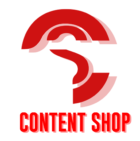Even before you actually shift the business data, it is important to know how it (i.e the data) will be organized for the migration. This means the first exercise is to divide the data which is being used in the current environment. The classification is essential as some data may be redundant and it can simply be dumped.
As we try to understand the key elements of Information Management and how they can be migrated with SAP S4 Hana Migration, it will clear many doubts about it. In fact, it will showcase how relevant it is to use this system to organize the data the company uses.
So let’s get started with the classification and then move on to the actual migration.
Sifting the data
It’s almost like spring cleaning. It may be a painful exercise but some old data really clogs the systems and slows the operation. Outdated addresses, contacts and clients who are no longer of any use can be simply deleted from the system. These files confuse someone who has newly joined the company and needs access to the database to work.
- Data which is still of good quality can be segregated for migration in the new transactional system. This same data will also be required for audits, analysis and other functions for the company.
2. Often poor quality data also requires migration to the new system. This may be for reference, previous records or simply for archives.
3. Data that is no longer required can be chucked out. Information that is no longer relevant to the company need not be kept even in the archives.
So, put in simple words….
Once you have decided the data classification, the actual with SAP S4 Hana Migration will be a better process. You will need a strategy to decide the data management techniques to waste less time on the actual migration. Do not expect the IT professional to implement data without this essential step for migration to the new transactional system.
Tools for data migration
Many professionals are wondering if LSMW is still valid. What about SAP RDM Content or the migration cockpit? Although the LSMW is still available, it is not a part of the tool box for many engineers on premises. The latest versions of SAP S/4 HANA may not support this version and hence it is better to avoid using it for migration. It has used the regular interfaces of BAPIs, iDOCs, Direct Input Batch input programs and even recordings.
As business has evolved so has technology. Some interfaces no longer work. The old data capturing and the structures are no long valid. Hence the LSMW has its restrictions and limitations in migration process. The engineer will need to check the applications before implementing. The only time when LSMW works during the transfer of data is when interfaces or content is existing after testing. It is not applicable on cloud.
Rapid migration services better for the data sifting project
This is a better option compared to LSMW if the function is being done on premises. The software is better suited to the new generation of data produced. It is targeted towards the interfaces and data structures. For a better understanding do watch a video that will help you to understand better. But otherwise, the migration cockpit (MC) and Migration Object Modeler (MOM) are the latest options. It can be done on premises, cloud (SAAS) or via HEC (IaaS) depending on the maturity level of the system.
The new project may require new coding and changes in the working model. The best time to make the change is when new customers are being added to the existing data.

In such a case the master data is shifted from the legacy system. The system conversion is based on software manager update with the database migration option. If there is a landscape transformation required, then a consolidated format can be used for migration.
The future now lies with the latest migration system. If you already have an IT department, get the engineers to know more about SAP S4 Hana Migration. Digital companies are all set to rule to roost with the new OS and SAP software. It is an investment for the future without which the business will come to a standstill.
When the data is organized in the right manner and contains the latest key information to do business, it will provide the competitive edge in a crowded marketplace.
